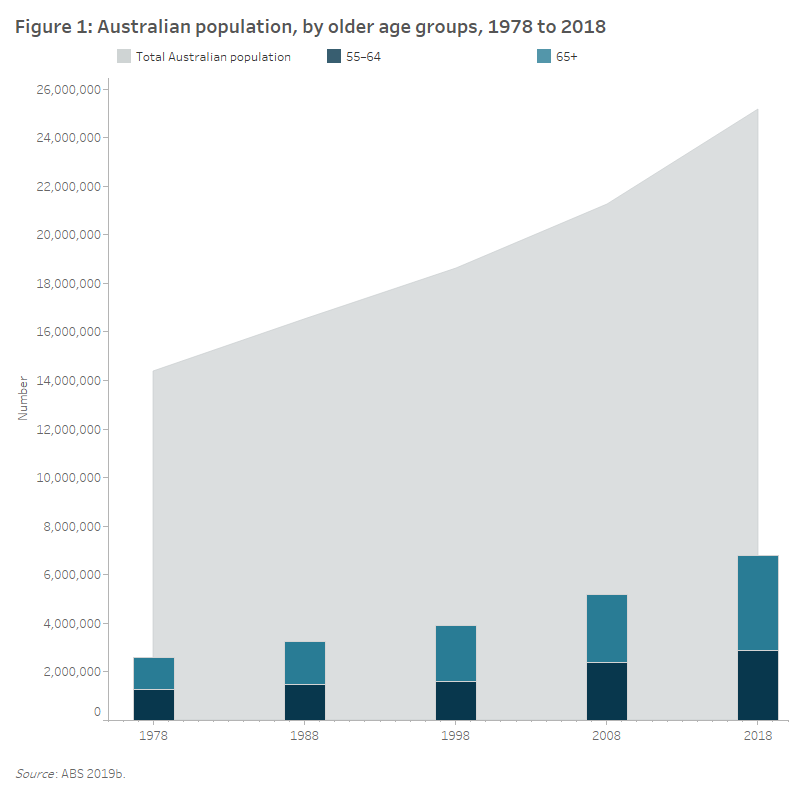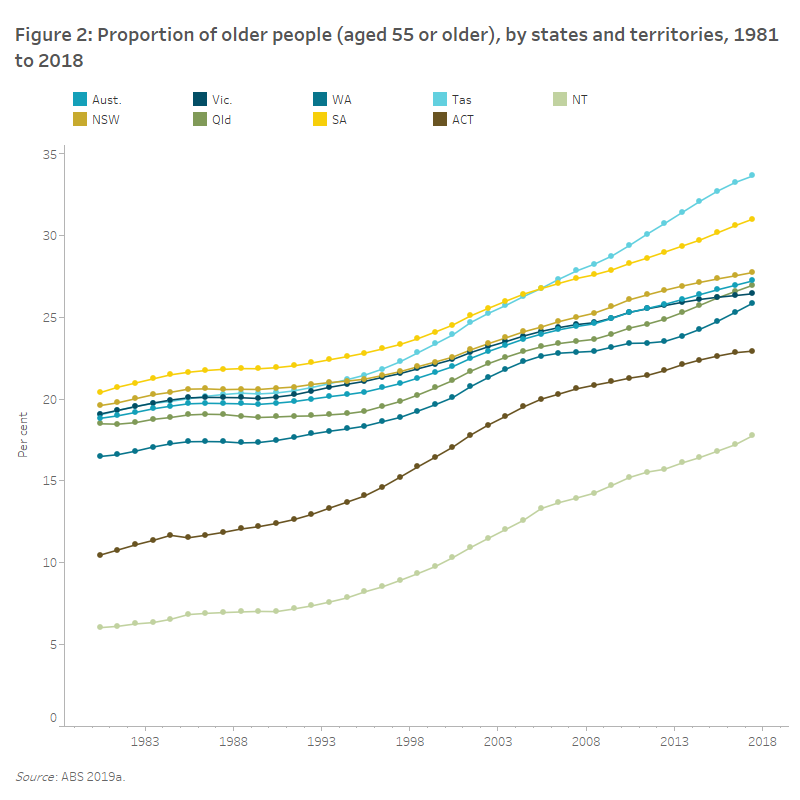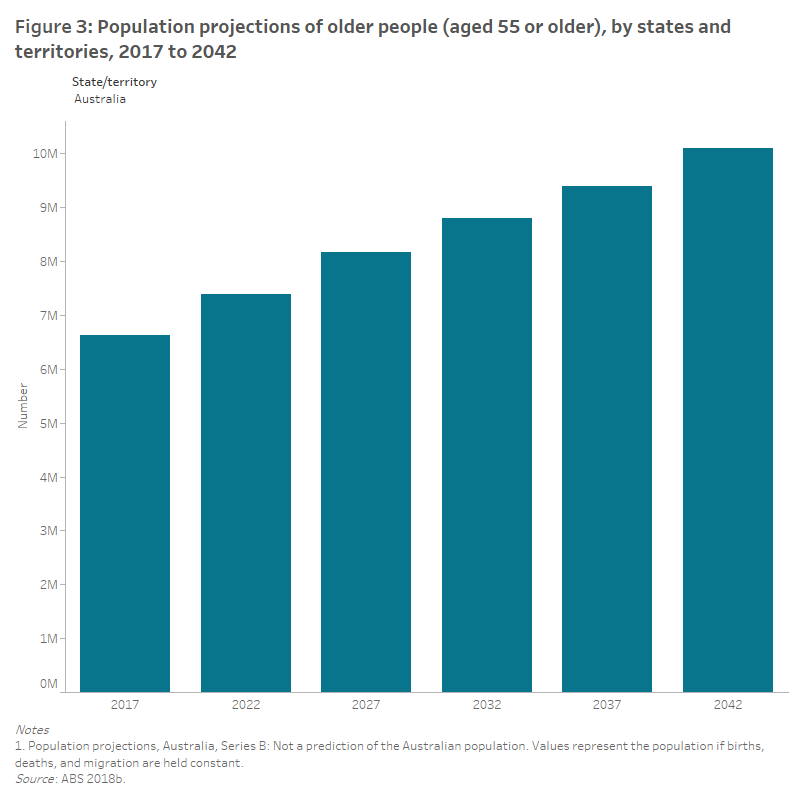Population profile of older Australians
Population profile of older Australians
The Australian population is ageing. Over the past century, the proportion of older Australians has grown and this trend is predicted to continue. Sustained low fertility rates, falling death rates, higher standards of healthcare, and increasing life expectancy have all influenced the ageing population trend for Australia (ABS 2018a).
The number and proportion of Australians who are aged 55 and over have been increasing over recent decades, and are expected to continue to grow (ABS 2019a).
In 1978, there were around 2.6 million Australians aged 55 and over (18% of the total Australian population) (Figure 1). By 1988, this had increased to 3.3 million (20% of the population) and by 2018 the numbers had further increased to 6.8 million older Australians (27% of the population) (ABS 2019b).

The proportion of the population aged 55 and over differs between the states and territories. As at December 2018, Tasmania (34%) and South Australia (31%) had the highest proportion of older Australians while the Northern Territory (18%) had the lowest (Figure 2). The remaining states and territories varied from 23% to 28% (ABS 2019a).

Population projections are useful to estimate the future size and characteristics of a population. They also help governments plan for future population growth. From 2017 to 2042, Australia’s population is projected to increase from 24.6 million to 34.3 million people. The number of Australians aged 55 and over is expected to increase from 6.6 million to 10.1 million over the same period (ABS 2018b).
Based on current trends in fertility, life expectancy at birth and migration, the number of older people in New South Wales is projected to grow the most, increasing from 2.2 million in 2017 to 3.2 million by 2042. In contrast, the number of older people in the Northern Territory is projected to grow the least, increasing from 42,700 in 2017 to 65,600 by 2042 (Figure 3) (ABS 2018b).

References
ABS (Australian Bureau of Statistics) 2019a, Australian Demographic Statistics, December 2018. ABS cat. no. 3101.0. Canberra: ABS.
ABS 2019b. Australian Historical Population Statistics, 2016. ABS cat. no. 3105.0.65.001. Canberra: ABS.
ABS 2018b. Population Projections, Australia, 2017–2066, Series B. ABS cat. no. 3222.0. Canberra: ABS.
ABS 2018a. Census of Population and Housing: Reflecting Australia—Stories from the Census – Ageing Population, 2016. ABS cat. no. 2071.0. Canberra: ABS.


